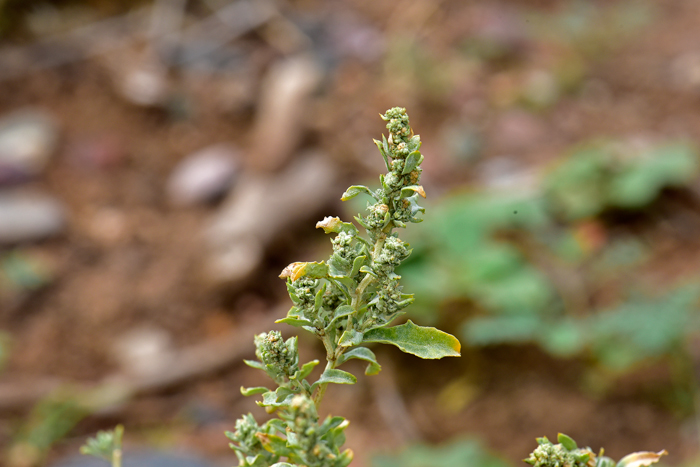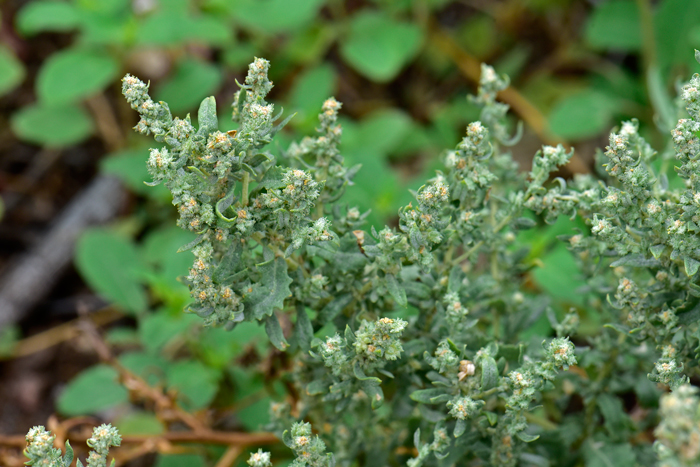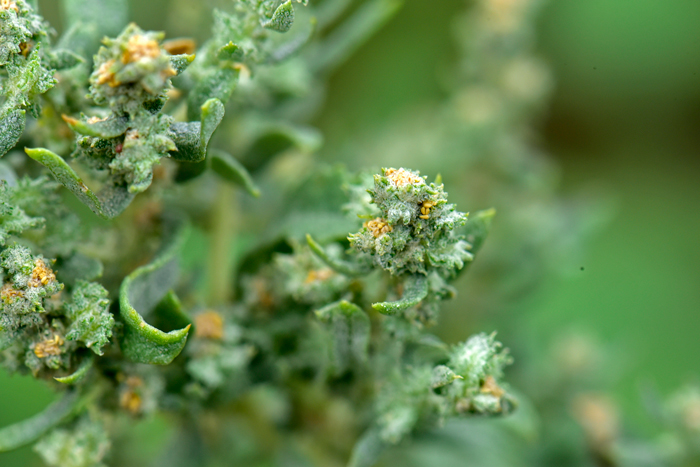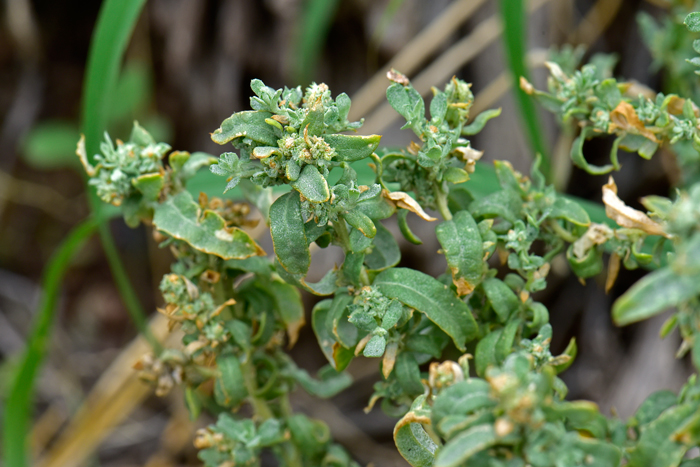Atriplex elegans, Wheelscale Saltbush




Scientific Name: Atriplex elegans
Common Name: Wheelscale Saltbush
Also Called: Wheelscale, Wheelscale Orach, White-scale Saltbush; (Spanish; Chamizo Cenizo)
Family: Chenopodiaceae, Goosefoot Family (now as sub-family Chenopodioideae in the Amaranthaceae Family).
Synonyms: (Atriplex elegans var. thornberi, Atriplex thornberi)
Status: Native
Duration: Annual, perennial
Size: Up to 1 ½ feet (.5 m) tall or more.
Growth Form: Sub-shrub or forb/herb; stems ascending or procumbent to erect; stramineous or whitish, simple or much branched at base; scurfy to glabrate.
Leaves: Green; many; sub-sessile or shortly petiolate; blades variable depending on variety, entire to irregularly dentate, elliptic to spatulate, oblanceolate, oblong or obovate; margins entire or irregularly dentate.
Flower Color: Green; monecious; staminate; flowers with 3 to 5 parted perianth; pistillate flowers intermixed with staminate in small axillary clusters; fruiting bracteoles sub-sessile or short stipulate; orbiculate, strongly compressed; terminal teeth often prominent.
Flowering Season: Depending on variety; April to May or March to July
Elevation: In California below 2,500 feet; in Arizona below 3,500 feet.
Habitat Preferences: Roadsides, waste land; Saline soil or alkaline soil, dry lakes, creosote-bush scrub.
Recorded Range: Atriplex elegans in found in the southwestern United States in AZ, CA, NM, NV, TX, UT. It is also found southward into central Mexico.
North America & US County Distribution Map for Atriplex elegans.
U.S. Weed Information: No information available.
Invasive/Noxious Weed Information: No information available.
Wetland Indicator: No information available.
Threatened/Endangered Information: No information available.
In the Southwestern United States: Arizona has 25 species of Atriplex, California has 51 species, Nevada has 27 species, New Mexico has 21 species, Texas has 21 species, Utah has 35 species. All data is approximate and subject to taxonomic changes.
There are 3 varieties in Atriplex elegans:
Atriplex elegans var. elegans, Wheelscale Saltbush, (AZ, CA, NM, TX, UT);
Atriplex elegans var. fasciculata, Wheelscale Saltbush, (AZ, CA, NV),
Atriplex elegans var. thornberi, Wheelscale Saltbush, (AZ, NM).
Comments: A weedy looking plant, mostly green; very common at roadsides and in waste land; freely grazed by cattle.
In Southwest Desert Flora also see: Australian Saltbush, Atriplex semibaccata, Desertholly, Atriplex hymenelytra, Four-wing Salt Bush, Atriplex canescens, Griffiths Saltbush, Atriplex torreyi var. griffithsii and Quailbush, Atriplex lentiformis.
See complete listing of ethno-botanical uses at Native American Ethnobotany, University of Michigan, Dearborn.

